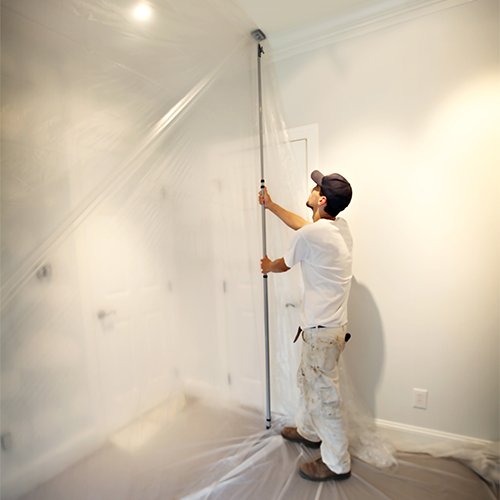What are Temporary Containment Solutions?
[edit] Introduction
Shutting down operations during a construction process can be expensive. Installing applicable temporary constraint systems before construction begins can allow you to continue to operate your business with minimum interruptions.
Temporary constraint systems can be employed for restoration and remediation systems in addition to full construction systems, enabling day-to-day operations to safely continue.
In healthcare systems, temporary walls, doors and accessories must inspire confidence against infection, and that the system will exclude the dust and pathogens so routine operations may continue without disruption.
[edit] Why are temporary containment solutions important?
Although they have certain benefits such as, looking good, and muffling construction noise, dry-walls can take days to build and must be thrown down after each phase of a design.
Polycarbonate partitions frequently fail to reduce noise pollution, nor are they as stable or durable.
Plastic sheeting, though affordable, doesn't reduce noise, nor are they very durable and cannot be used in any healthcare setting.
Temporary containment solutions offer:
- Easy re-configuration
- Long-lasting
- Easy cleaning
- Less waste
- Long-term value
- Staff and customer safety
- Noise reduction
- Aesthetic quality
- Customisation
[edit] Related articles on Designing Buildings
Featured articles and news
One of the most impressive Victorian architects. Book review.
RTPI leader to become new CIOB Chief Executive Officer
Dr Victoria Hills MRTPI, FICE to take over after Caroline Gumble’s departure.
Social and affordable housing, a long term plan for delivery
The “Delivering a Decade of Renewal for Social and Affordable Housing” strategy sets out future path.
A change to adoptive architecture
Effects of global weather warming on architectural detailing, material choice and human interaction.
The proposed publicly owned and backed subsidiary of Homes England, to facilitate new homes.
How big is the problem and what can we do to mitigate the effects?
Overheating guidance and tools for building designers
A number of cool guides to help with the heat.
The UK's Modern Industrial Strategy: A 10 year plan
Previous consultation criticism, current key elements and general support with some persisting reservations.
Building Safety Regulator reforms
New roles, new staff and a new fast track service pave the way for a single construction regulator.
Architectural Technologist CPDs and Communications
CIAT CPD… and how you can do it!
Cooling centres and cool spaces
Managing extreme heat in cities by directing the public to places for heat stress relief and water sources.
Winter gardens: A brief history and warm variations
Extending the season with glass in different forms and terms.
Restoring Great Yarmouth's Winter Gardens
Transforming one of the least sustainable constructions imaginable.
Construction Skills Mission Board launch sector drive
Newly formed government and industry collaboration set strategy for recruiting an additional 100,000 construction workers a year.
New Architects Code comes into effect in September 2025
ARB Architects Code of Conduct and Practice available with ongoing consultation regarding guidance.
Welsh Skills Body (Medr) launches ambitious plan
The new skills body brings together funding and regulation of tertiary education and research for the devolved nation.
Paul Gandy FCIOB announced as next CIOB President
Former Tilbury Douglas CEO takes helm.
























Comments
[edit] To make a comment about this article, or to suggest changes, click 'Add a comment' above. Separate your comments from any existing comments by inserting a horizontal line.